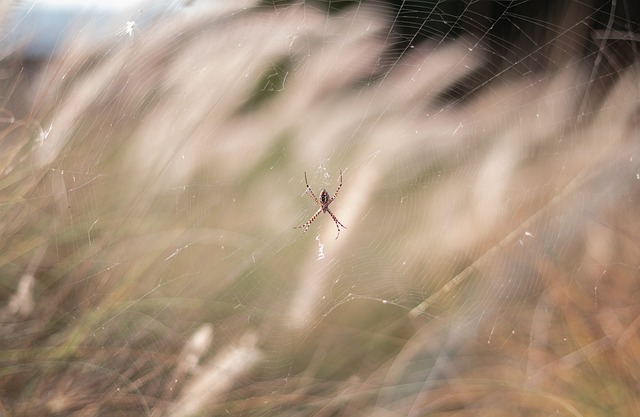Detecting a sowbug infestation early is crucial as these tiny insects cause substantial damage to fabrics, carpets, and wooden structures. Look for pinholes in fabric or wallpaper and a musty odour, and inspect dark, damp areas for clumps of sowbugs, especially at night. Preventive measures include maintaining low indoor humidity, sealing entry points, caulking cracks, and proper kitchen hygiene. Regular vacuuming, sealing gaps, storing food in airtight containers, and trimming vegetation also deter sowbugs. For severe infestations, professional pest control services are recommended.
“Uncover the subtle signs of a sowbug infestation and take back your space! This comprehensive guide reveals the common symptoms these tiny invaders leave behind. From identifying their presence to understanding their habits, we equip you with knowledge. Learn effective strategies for sowbug control, from natural remedies to professional treatments. Additionally, discover prevention tips to safeguard against future infestations. Conquer sowbug pest control and reclaim a bug-free haven.”
Identifying Sowbug Infestation: Common Signs and Symptoms
Identifying a sowbug infestation is crucial for effective sowbug pest control. These small, wingless insects are often overlooked due to their size and quiet nature, but they can cause significant damage to fabrics, carpets, and even wooden structures if left unchecked. Common signs include small pinholes in fabric or wallpaper, which serve as entry points for sowbugs to feed on cellulose-based materials. You might also notice a strong musty odour, as these pests produce a characteristic smell when disturbed.
In terms of behaviour, sowbugs are nocturnal and tend to hide in dark, damp places during the day. They prefer crevices and cracks, making it easy for them to remain undetected. Keep an eye out for clumps of these insects scattered across floors or walls, especially in areas with poor lighting. If you suspect a sowbug infestation, prompt action is essential. Regular vacuuming can help remove visible pests, but for a thorough sowbug pest control solution, professional intervention may be necessary to eradicate the problem at its source.
Understanding the Behavior and Habitat of Sowbugs
Sowbugs, also known as armadillos or wood lice, are small, wingless insects that belong to the family Armadillidiidae. These creatures are often overlooked but can quickly become a significant pest in homes and commercial spaces, especially in damp environments. Understanding their behavior and preferred habitats is essential for effective sowbug pest control.
They typically seek out dark, moist places to hide and breed, such as cracks, crevices, and areas behind walls or floorboards. Sowbugs are primarily nocturnal, preferring the coolness of night to forage for food. They feed on a variety of organic materials, including plant matter, decaying wood, and even non-food items like paper products and fabrics. Recognizing their unique behavior patterns is crucial in identifying infestations early. Regular inspections, especially in damp areas, can help detect signs of sowbug activity, allowing for prompt action to address and control these persistent pests.
Effective Strategies for Sowbug Pest Control
Effective Strategies for Sowbug Pest Control
Identifying and addressing a sowbug infestation early is key to successful sowbug pest control. Regular inspections of your home, especially in damp areas like basements, crawl spaces, and kitchens, can help you spot signs of these pests. Look for small, oval-shaped insects with a brown or gray coloration, as well as their egg cases, which resemble tiny white capsules. Once spotted, quickly clean up any debris or food sources that might attract them. Reducing moisture levels in your home is also crucial, as sowbugs thrive in humid environments. Consider investing in dehumidifiers to maintain optimal indoor humidity levels below 50%.
Implementing preventive measures can significantly deter sowbugs from entering your home. Seal cracks and gaps around doors, windows, and utility pipes with caulk or weatherstripping. Ensure proper ventilation in attics and crawl spaces, as good air circulation disrupts their life cycle. Regularly clean and sanitize your kitchen, promptly wiping up spills and storing food in airtight containers. Pet owners should also take precautions by keeping pet food in secure containers to eliminate another potential food source for these pests.
Prevention Measures to Avoid Future Infestations
To prevent future sowbug infestations, it’s crucial to take proactive measures. Start by maintaining excellent hygiene and cleanliness in your home or commercial space. Regularly vacuum and dust, paying special attention to corners, crevices, and areas where these pests can hide. Seal any gaps or cracks in walls, floors, and doors to limit their entry points. Keep organic materials, like leaves and wood, away from your property since sowbugs thrive in damp, decomposing environments. Additionally, store food items in airtight containers to avoid attracting them with scents. Regular inspections are also key; periodically checking for any signs of sowbug activity allows for early detection and easier control.
Implementing proper pest control practices is essential. This includes using recommended insecticides or repellents designed to target sowbugs specifically. Professional services can offer expert advice tailored to your situation. Furthermore, maintaining a healthy, bug-unfriendly environment makes it less likely that sowbugs will return. Regularly trimming vegetation and removing debris from your property creates less hospitable conditions for these pests.
In conclusion, identifying a sowbug infestation early through common signs like visible bugs, damage to plants, and sticky substances is crucial. Understanding their behavior and habitat enables effective strategies for sowbug pest control, including natural remedies, traps, and chemical treatments. Additionally, implementing prevention measures such as maintaining cleanliness, sealing entry points, and managing vegetation can avoid future infestations. For optimal sowbug pest control, a multi-faceted approach combining these methods is recommended to protect your home or garden.
